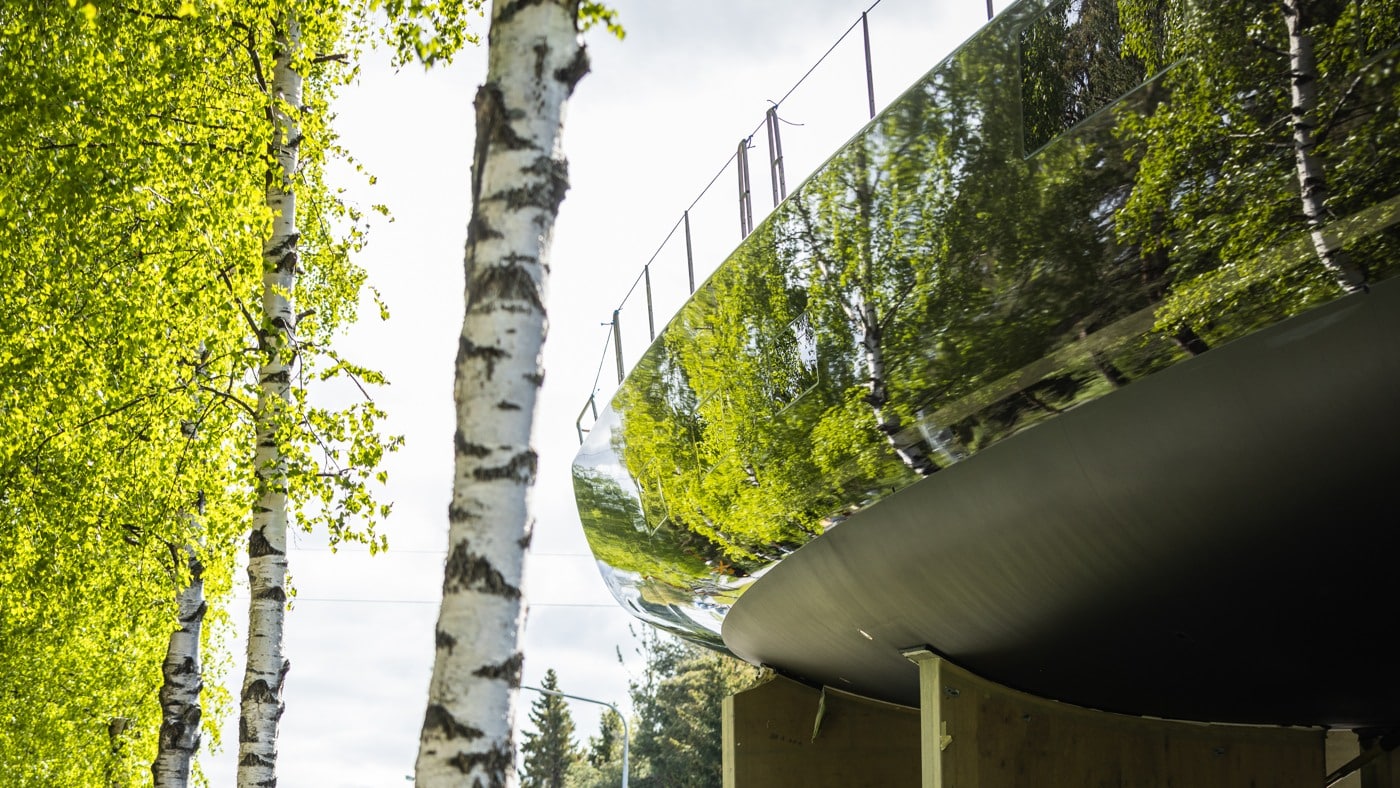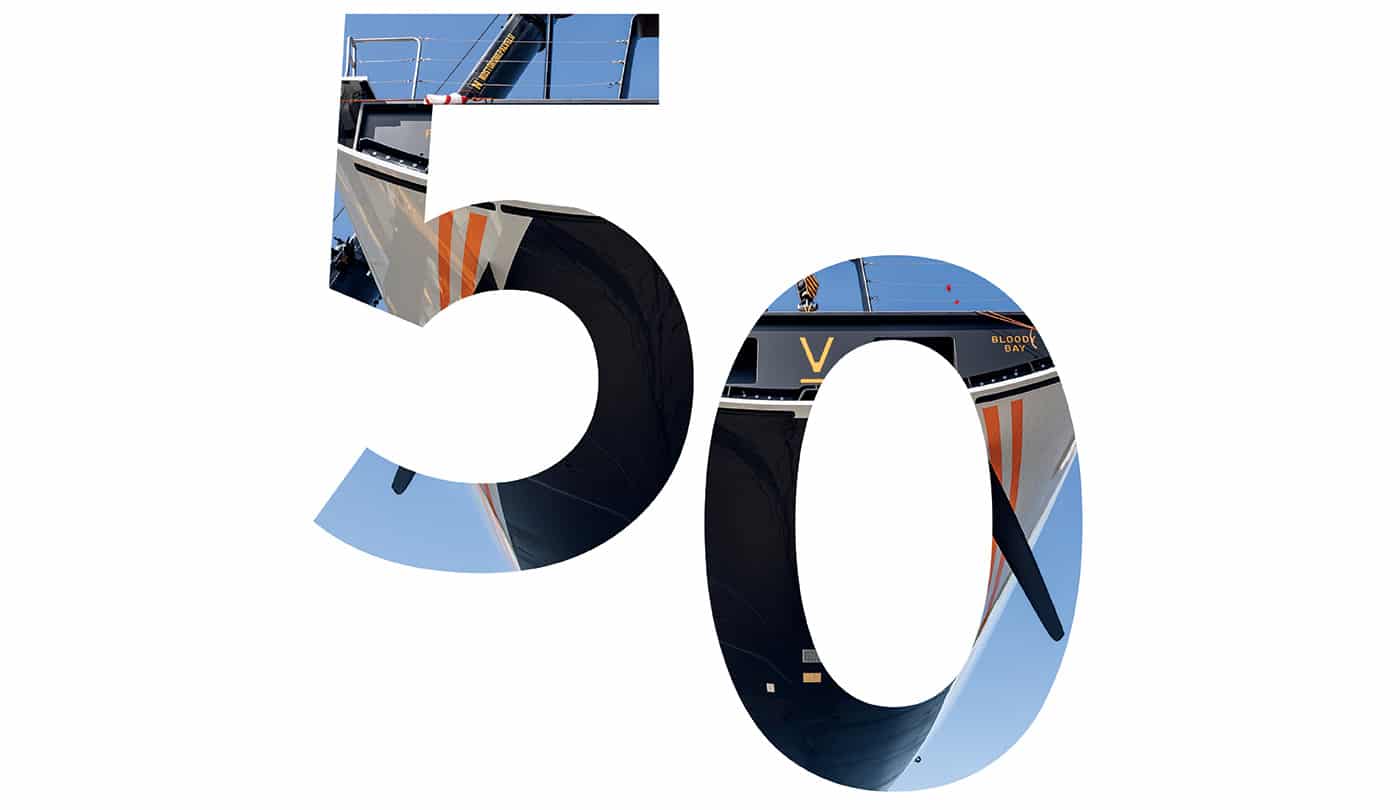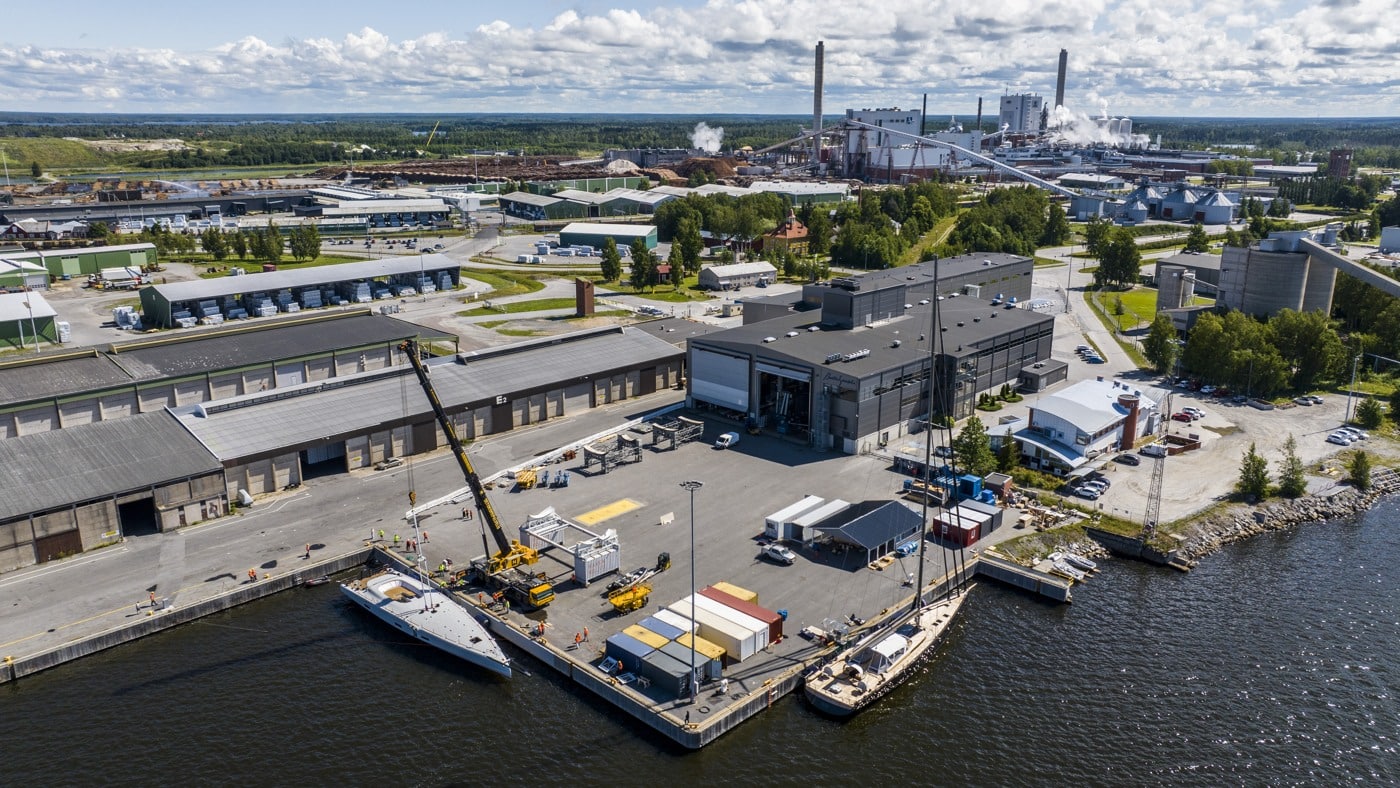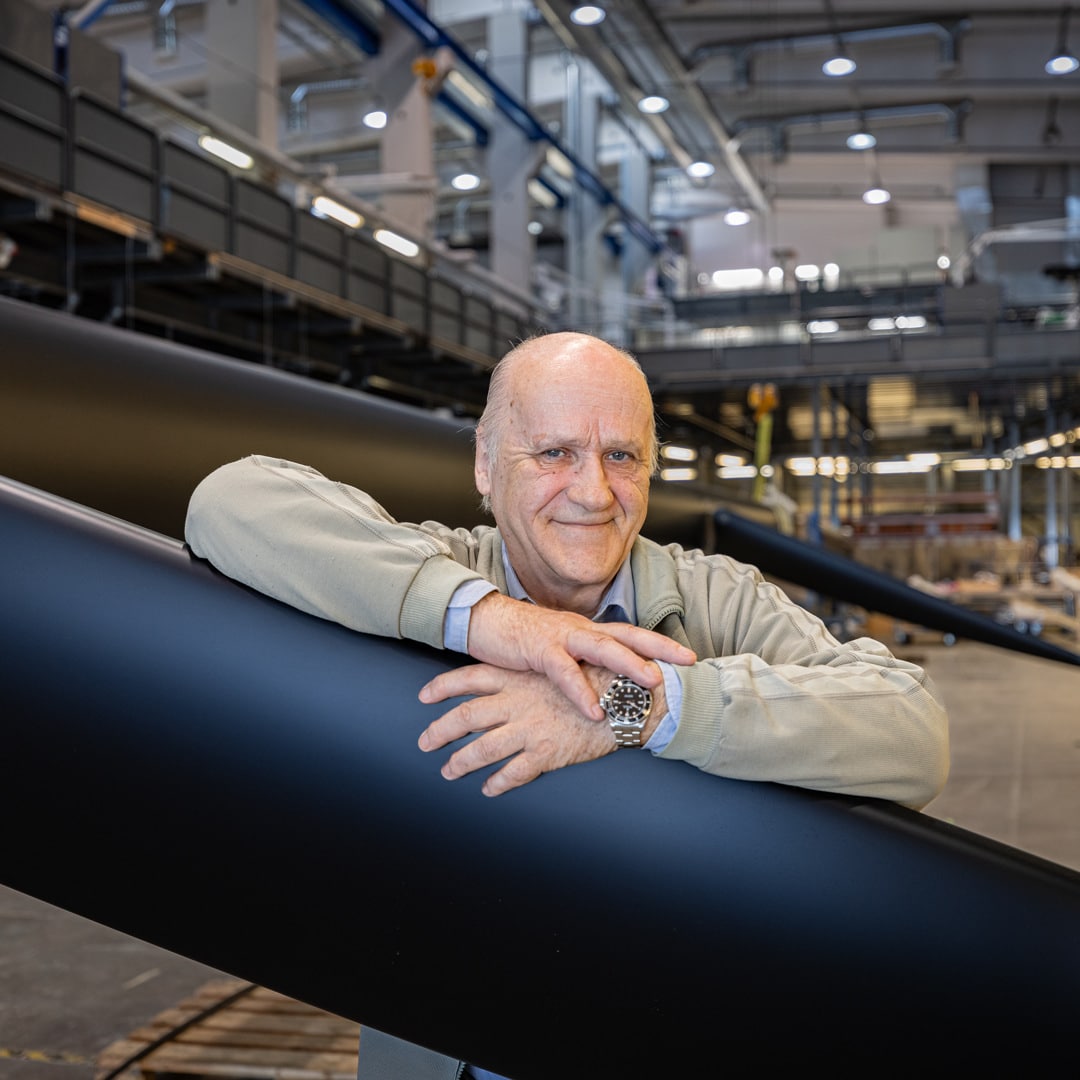
TIDE MAGAZINE: BALTIC YACHTS HITS 50
23 January 2024
At the crest of boat-building since 1973, founder PG Johansson looks back at the making of Baltic Yachts
Fifty years is a long time in anybody’s book, but doubly so in the gruelling world of boatbuilding. Simply in reaching its half-century, Finland’s Baltic Yachts is laying claim to a place near the top of the industry’s evolutionary ladder. Consider the disruptive influence of the yard’s fast-cruising boats in addition to that, and that status only grows.
For some, Baltic is synonymous with monster sailing machines such as the 59.9m ketch Hetairos or 53.4m sloop Pink Gin. But it all began back in 1973 with a much more modest 46-footer. Per-Göran ‘PG’ Johansson was one of the five founders of the yard, and he remembers how that first build raised eyebrows. “We didn’t feel the size of the 46 was a problem, but we were criticised by outsiders,” he says.
“They asked us: ‘how can you start with such a big boat?’. I guess everyone has dreams of flying with their own wings.”
Along with co-founders Tor Hinders, Nils Luoma, Jan-Erik Nyfelt and Ingmar Sundelin, PG had struck out from near-neighbour Nautor Swan to start the business in a shed in the northern village of Bosund. All five were driven by the desire to introduce new technology and new ideas to build better boats – something that remains core to the yard’s identity 50 years on.
“We wanted to raise the technology and give the client a customised product,” PG says. “The majority of the people involved in yachting were in favour of heavy boats – they didn’t see the potential of building lighter, sandwich (layered) construction. But this was something we wanted to explore.”

In the 70s, building lighter meant using unidirectional glass fibre and sandwich construction. Then it was full glass composite in the 80s, and in 1996, Baltic became the first yard to build a cruising yacht entirely in pre-preg carbon, with 67ft Aledoa. In the same year, Anny followed with a lifting keel and hydraulic sail controls, while 1997 saw the introduction of cores made with Nomex honeycomb (strong but lightweight material comprised of paper and resin) and pre-preg carbon interiors for lightness.
All the while, naysayers didn’t believe the displacement figures, PG remembers. It was a constant battle to explain their validity to them. “What happens when you use lighter laminate between hull, deck and interior? Let’s say you can reduce displacement by 1,500kg, then you can do with less sail area, then you can have a lighter keel. Lighter and easier to drive means you don’t need the same sized engine. In the end, you gain much more than the original savings – that was one of our original ideas.”
PG has a rare earthy modesty to him which makes it hard to gauge the extent of his genius on engineering matters. For that, you have to turn to Kenneth Nyfelt, son of co-founder Jan-Erik. He has been working on the sales side of the business since 2005. “Everything I know about yachting, I have learnt from PG,” he tells me with a grin. “He inspires you to look for what’s behind the next page – always pushing people to develop themselves without him being the big man. Technical discussions, personal relations, religion: he has an answer for everything.”
And yet, that wasn’t always the case. As a young man, right back at the start of Baltic Yachts, PG admits that they had little notion of selling. “We were boatbuilders, not really marketing people and that was an obstacle,” he says. “One way to get over that was in choosing C&C Canada as naval architects. We were a good team, as they assisted us on the marketing side.”
That relationship got the yard up and running. The first boat was built on spec and sold in a flash at the Hamburg Boat Show in 1974. A custom 42-footer quickly followed. The first Baltic 39 was launched in 1977 and over the next six years, it became the yard’s best-selling model – 74 were launched in total. “We’re trying to stay in touch with all the owners, so many of them are sailing still,” says PG.

But a major shift was already under way, as the yard geared itself more towards custom and semi-custom projects for ambitious clients. And PG found that these people were one of the real attractions of the job. “That’s what makes my yachting life interesting,” he says. “They are very successful people, and successful in very different ways, so there are often few similarities between them. (There are) very few business segments where you get to meet such (a variety of) people.”
Kenneth Nyfelt says that PG’s quiet confidence paid dividends at this end of the market. “He’s always been very good at reading people. In discussions with owners, he knows who the decision maker is. He doesn’t need to be the person speaking the loudest in the room.” It’s just as well, because one of these owners became the boss when prosthetics entrepreneur Hans Georg Näder bought Baltic in 2013. He is behind the Pink Gin series of yachts.
It hasn’t been a completely smooth path, with the Finnish shipbuilder Hollming acquiring the business in 1979, then a choppy management buy-out in 1990. But the boats have steadily increased in size and complexity. Speaking to PG, I quickly get the sense that his magnum opus – his proudest achievement – is 147ft Visione, the planing behemoth launched in 2002. It was the yard’s first project over the talismanic 100ft mark – territory which Baltic now considers home. But it was the client’s relentless pursuit of weight savings that makes this all-carbon project stand out.
“The hull and deck are pre-preg carbon, with aircraft-grade Nomex sandwich,” says PG in the manner of one for whom the details are all in easy mental reach. “The interior – bulkheads were also pre-preg Nomex sandwich. We had just purchased a laminating press to make really good bulkhead surfaces. We could glue a very thin teak veneer to it, so it looked like solid wood.” Gleaming rails at the pulpit and pushpit appear to be stainless steel, but were actually polished titanium. Even the valve blocks for the copious hydraulics were in titanium. “Wherever we could come up with a weight saving, we would put a proposal in front of the client,” says PG. “They would give an answer immediately. The only ‘no’ was when we were talking about the keel bulb. Going heavier than lead would have meant a smaller bulb and less resistance. We looked into a radiation shield material that was 45 per cent lighter, but the cost was around US$6m. VPP studies confirmed it made little difference.”
‘The technology and knowledge that Baltic has could fit very, very well into a catamaran. I see that as a good potential next focus. And there are other possibilities… Foils will be used in some projects’
The way his colleagues speak of him makes it sound as if there isn’t anything that PG is not an authority on. But there is one anecdote that gives the lie to that. It was his 50th birthday, and the team had organised a surprise. A close client played along, asking for a meeting at short notice. PG organised rooms, booked a restaurant and went to meet him at the local airport.
“Then there were five or six people from the office behind the airline desk, who leapt out and said: ‘happy birthday’,” remembers now Sales Director Kenneth Nyfelt. “You should have seen his eyes when he understood he’d been tricked! One of the foremen said, ‘I had never thought it possible to make a fool out of PG, but now I know otherwise’.”
Time marches on and Baltic is in the process of moving operations from Bosund to a purpose-built site in nearby Jakobstad. PG has stepped back from the day-to-day business, but he is still at the other end of a phone for the team’s frequent queries. And while there is not the same pace of development in materials now as there was back in 1973, he sees plenty of opportunity for Baltic to push the envelope with its future designs. “The technology and knowledge that Baltic has could fit very, very well into a catamaran. I see that as a good potential (next focus),” says PG. “And there are other possibilities – like the wing we had on the 142-footer (Canova) to increase stability. Foils will be used in some projects.”
Executive Vice President Henry Hawkins confirms that Baltic expects to launch a catamaran within three years, pointing to the concept work done with Malcolm McKeon on the 30-50m BlackCat range. Sustainability is the other major driver of change, from electric motors to building with flax fibres, but here he is more cautious. “We’re not at the stage now where you can produce the same performance as traditional carbon composites, due to weight and the structural properties of the natural fibres,” he says. “It’s a little bit ‘crystal ball’, but it is coming.”

SAILING TO SOUTHAMPTON THE HARD WAY
PG JOHANSSON
“I remember we were in Rotterdam, sailing to a boat show in Southampton. It was in a 37-footer – a serial production boat. We left Rotterdam in very tough weather, getting outside with a fully reefed main and a storm jib. All the way to Dover, we had 60-65kn of wind on the B&G. In that area, with wind against tide, sailing upwind, it was pretty rough.
“When we got to Dover, we called the port and they asked what kind of ship we were – they were amazed we could be out there in a 37ft sailing boat. Most of the ferries were cancelled. We continued with the same kind of wind the day after – it was really tough. Rounding Beachy Head, we had amazing waves and got knocked down (the mast touched the water).
Then I was really happy that I knew that boat so well – I knew who did the calculations and who designed and built her. “Most of the pontoons at Southampton were half empty. I was honestly never afraid – I should have been, thinking back on it.”
